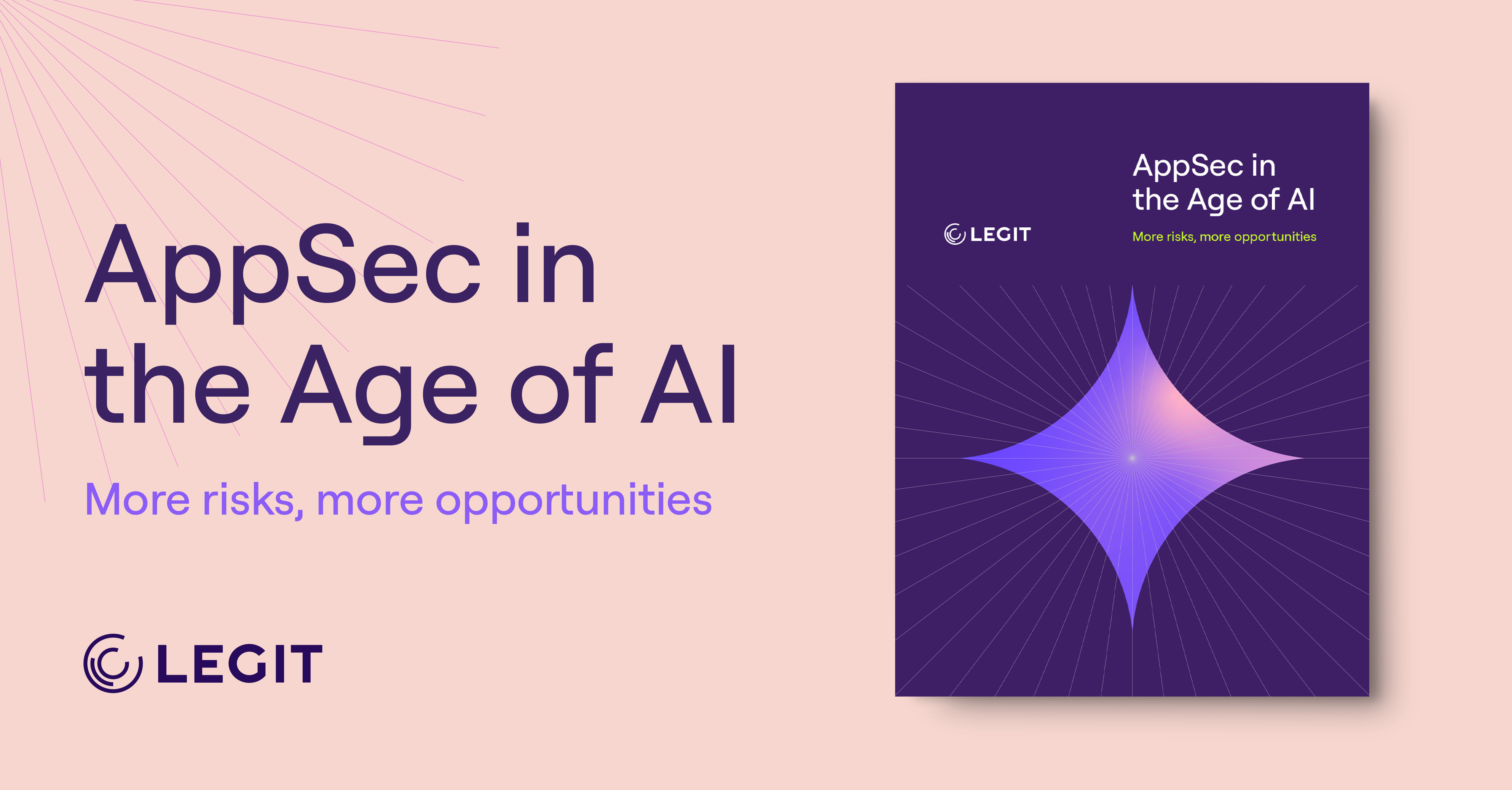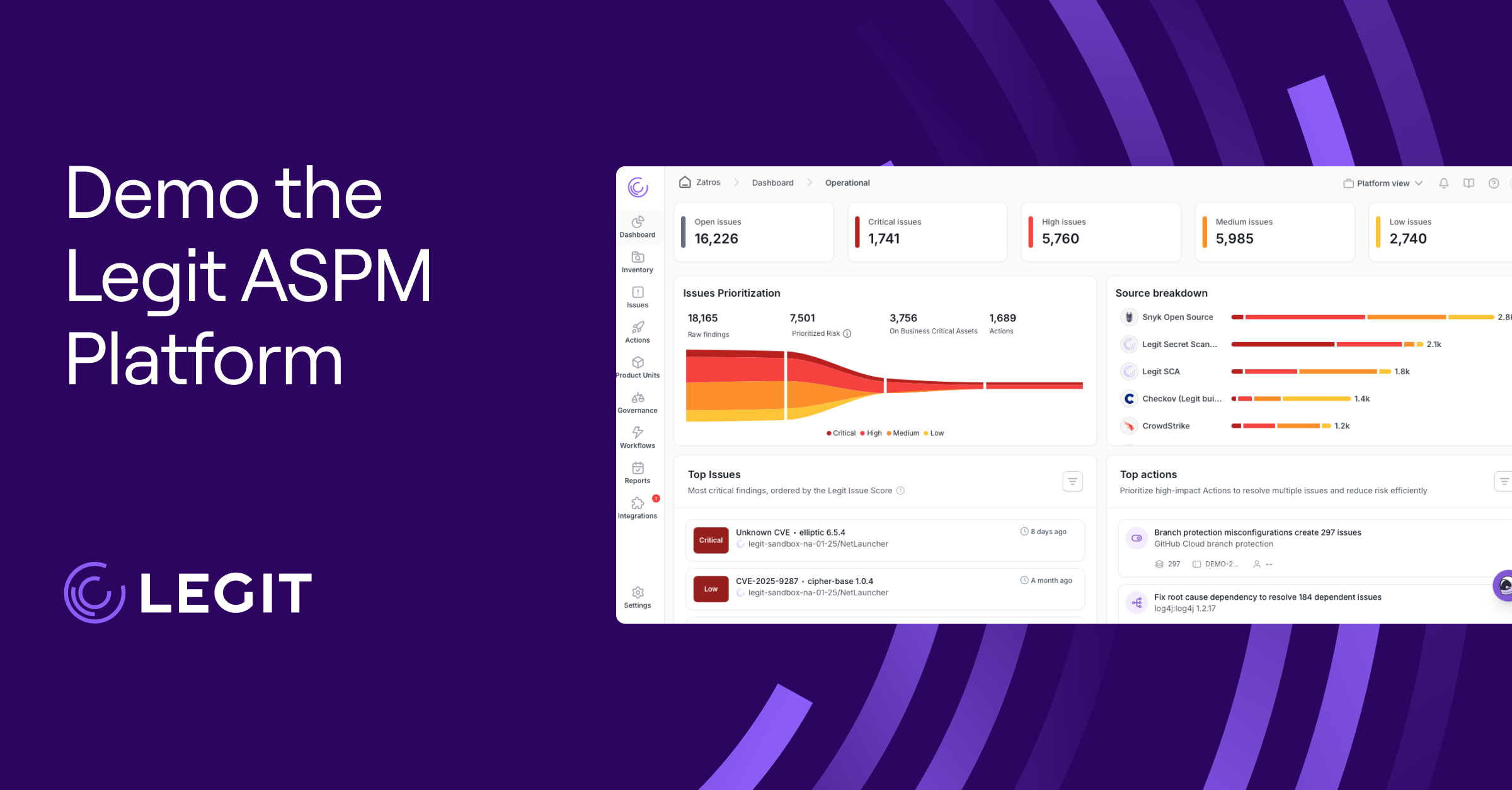Everyone’s using GenAI. But are enough people asking what it’s doing behind the curtain?
Large language models (LLMs) and AI models now write code, test applications, write content, and even support incident response. But as these systems go mainstream, so do the risks: hallucinated outputs, embedded vulnerabilities, and malicious prompts that can expose sensitive data or open the door to threat actors.
Securing the infrastructure isn’t enough anymore—teams also have to protect the AI itself. In response, companies are turning to a new line of defense: generative AI security.
What Is Generative AI Security?
As organizations embed generative AI into development pipelines and business operations, they face a new class of threats—from prompt injection and data leakage to adversarial misuse—that traditional security tools weren’t built to handle.
Generative AI security is a response to that shift. It focuses on protecting the artificial intelligence systems that create code, text, or media and aims to prevent misuse—whether accidental or intentional.
But preventing attacks isn’t enough. Real resilience means designing systems that are harder to exploit in the first place. That includes setting clear boundaries around how models behave and what data they can access. It also involves determining who has the authority to use them. Guidance from efforts like the NIST AI Risk Management Framework helps teams establish those controls with structure and intention so AI systems stay aligned with their intended purpose as they evolve.
When implemented effectively, generative AI security preserves privacy, protects your security posture, and ensures these tools deliver value without introducing unacceptable risks.
7 Risks of Generative AI
With every leap in generative AI capabilities comes a greater opportunity for attack. What makes these tools effective—their scale, speed, and realism—also makes them dangerous in the wrong hands.
Below are seven of the most pressing generative AI security risks that organizations face when integrating these systems into development and decision-making.
1. Deepfakes
Generative AI has made it easier to create deepfakes: fake or altered media—whether images, videos, or voice recordings—that seem real. The intent is usually to impersonate public figures or trusted colleagues, typically to spread disinformation or manipulate public opinion. In some cases, deepfakes have caused financial disruption or lasting reputational damage—while steadily eroding public trust in what people see and hear online.
2. Data Poisoning
In a data poisoning attack, adversaries intentionally introduce malicious or manipulated data into an AI model’s training set. The goal is to distort the model's behavior so that it produces insecure code, overlooks threats, or makes flawed decisions. These attacks are especially dangerous in software pipelines where AI systems automatically generate code or configurations with little or no human oversight. Truly securing AI-generated code requires validating both what goes into the model and what comes out.
3. Phishing Attacks
AI has supercharged phishing. Generative models can craft emails that mimic an executive’s tone or even simulate real-time chat conversations with would-be targets. These scams are more tailored, more convincing, and far harder to spot than traditional spam. Many have already slipped past legacy detection tools, pushing security teams to adopt new strategies and update how they respond.
4. Privacy Leaks in Model Outputs
Even if your generative AI tool never touches production data directly, it can still expose sensitive information. Training models on datasets that contain private details can cause them to regurgitate that data—sometimes word for word. As teams embed AI deeper into user-facing applications and internal systems, the risk of model leakage only grows.
5. Embedded LLM Vulnerabilities
The rise of embedded LLMs in business tools brings new potential for misuse, where model behavior can undermine application integrity or user trust. And the risks aren’t just theoretical. Without proper guardrails, LLMs can introduce vulnerabilities like prompt injection, insecure plugin execution, and overbroad permissions.
6. Malicious Code Generation
Generative AI tools that help developers write code, like GitHub Copilot or Cursor, can also accidentally introduce security vulnerabilities. Attackers can even manipulate model behavior to suggest flawed logic or insecure defaults. For developers who move fast, these suggestions can slip into production unnoticed, especially in environments without code validation protocols or review processes.
7. Overreliance, Blind Trust, and AI Hallucinations
Generative AI tools are getting better at sounding human: more fluent, polished, and authoritative. But this comes with a tradeoff: It’s getting harder for humans to spot when AI is wrong. As a result, organizations may start treating AI-generated content as fact—no questions asked. That overreliance can lead to flawed decisions, especially in high-stakes fields like journalism and law, where accuracy is indispensable.
A major reason for this risk is a phenomenon known as AI hallucination: when a model produces information that sounds credible but is completely made up. This kind of confident uncertainty shows just how generative AI has affected security, and the consequences can be severe.
4 Generative AI Benefits
The risks of generative AI are real—but so is its potential to improve cybersecurity when used responsibly. Here are a few ways generative AI can strengthen your security posture.
1. Improve Threat Detection
Security teams use generative AI models to recognize patterns, analyze large datasets, and detect subtle anomalies that traditional tools might miss. These models adapt over time, learning to spot deviations from normal network behavior and simulating attacks to test defenses. Because it catches what legacy tools often overlook—and does it faster—GenAI is quickly becoming a mainstay of modern application security strategies.
2. Automation of Security Operations
Generative AI can automate repetitive tasks like log parsing, alert triage, and vulnerability scanning. It can even generate tailored scripts or actions based on the nature of a threat, optimizing remediation efforts without waiting for human intervention. The result is faster response times, more consistent workflows, and less security team burnout.
3. Cybersecurity Training With Realistic Scenarios
Training simulations only work if they feel like the real thing. Generative AI powers dynamic, adaptive cybersecurity scenarios that don’t just follow a script—they evolve based on how users respond. Trainees can investigate a mock ransomware event, trace anomalies, and run incident protocols in environments that adapt based on their choices. These immersive scenarios strengthen both hands-on technical ability and fast, confident decision-making.
4. Smarter Tooling and Fewer False Positives
Security tools often flag harmless behavior, overwhelming teams with noise. Generative AI helps by learning which patterns typically lead nowhere—and which signal real trouble. Instead of flooding analysts with false positives, it filters intelligently and surfaces what actually matters. That’s already happening in high-noise areas like secrets detection, where GenAI-powered scanners are cutting through the clutter in a space that’s notorious for low-signal output.
Uses for Generative AI Security
Generative AI is changing how security teams operate—not by replacing analysts but by helping them move faster and stay ahead of emerging threats. Here are several use cases where GenAI is delivering the most impact.
Behavior Analysis and Anomaly Detection
By learning what normal looks like across systems and users, generative AI can flag subtle anomalies that suggest misbehavior or a breach. It continuously refines its baseline, identifying risks that rule-based tools often miss.
Identifying Attacks in Real Time
Generative AI models can spot phishing, malware, and zero-day threats faster than human triage. By surfacing hidden signals at machine speed, they help security teams catch threats earlier, reduce dwell time, and respond with greater precision. And because GenAI models learn from every incident, they improve the performance of your AI cybersecurity tools over time.
Accelerating Incident Response
When something goes wrong, every second counts. Generative AI can jumpstart the response process by automating the initial triage and categorizing threats. It can also recommend containment steps and generate tailored response scripts, helping teams move faster without sacrificing precision.
Enforcing Policy and Regulatory Alignment
Generative AI can also interpret and implement complex frameworks, including federal mandates and executive orders. By mapping system behavior to evolving regulations, AI helps organizations stay compliant with less manual overhead.
Mitigating Generative AI Security Risks
You need proactive measures that evolve with the threat landscape to stay ahead. Here’s how to reduce risk while still reaping the benefits.
Create an AI Governance Framework
Establish clear AI usage policies that define ethical guidelines, development standards, and decision-making oversight. A strong governance structure will help you assign ownership, evaluate models, schedule updates, and align with broader industry standards—all while building internal accountability into every stage of the AI lifecycle.
Enforce Strict Access and Data Controls
Limit who can interact with your models and what data they can access. That includes multi-factor authentication, tightly scoped user roles, and encryption of sensitive data in transit and at rest. Foundational controls are key to securing both your generative AI and cybersecurity workflows.
Monitor Models and Outputs Continuously
Security doesn’t stop at deployment. Real-time monitoring tools can detect model drift, anomalous behavior, and unauthorized access and give teams a chance to act before misuse escalates. When it comes to good generative AI cybersecurity hygiene, that kind of vigilance is non-negotiable.
Train Employees to Recognize AI Misuse
Your models are only as secure as the people using them. Ongoing training helps employees spot red flags, avoid accidental data leaks, and understand the stakes of working with GenAI-based tools. AI can do a lot, but human oversight keeps it in check and on track.
Generative AI Security With Legit Security
Generative AI is radically reshaping how developers build software—but it also introduces new risks to your models, pipelines, and code. Legit Security helps you stay ahead by securing every layer of AI-native development, from prompt to production.
Legit Security’s purpose-built ASPM platform continuously monitors AI-generated code, enforces usage policies, and flags risks early. Its AI agents help your team get the automation and insight needed to manage AI at scale—without sacrificing speed or safety.
Put the right guardrails in place before issues arise. Book a demo to learn more.
Download our new whitepaper.


